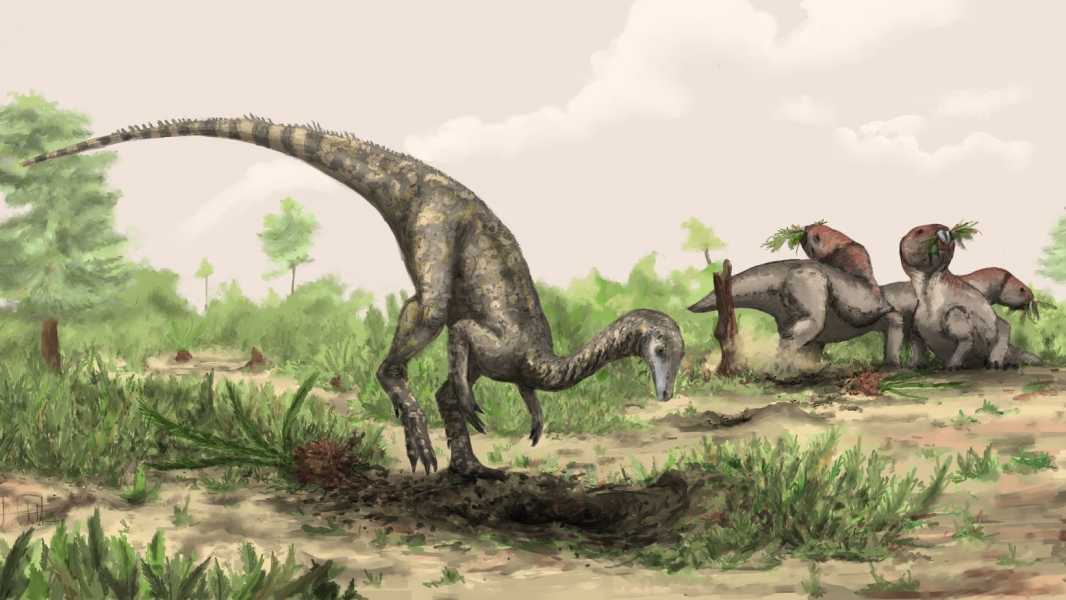
An artist's illustration of Nyasasaurus, which may be the earliest known dinosaur or a close relative of early dinosaurs. (Image credit: Mark Witton/Trustees of the Natural History Museum, London)
A new study suggests that the remains of the planet's earliest dinosaurs may be hidden deep beneath the sands of the Sahara and in the Amazon rainforest.
If these fossils are found, they could shed light on the history of dinosaurs much further back than 230 million years ago, which is the age of the earliest dinosaur bones ever found. Such a discovery would also dramatically change scientists' understanding of where and how dinosaurs first evolved.
“Dinosaurs are well studied, but we still don’t know where they came from,” lead author Joel Heath, a PhD student in earth sciences at University College London (UCL) in the UK, said in a statement. “There are such significant gaps in the fossil record that it cannot be relied upon without reservation.”
Fossils found so far indicate that dinosaurs first appeared in the southernmost parts of the ancient supercontinent Gondwana, which included what is now South America, Africa, India, Australia, New Zealand, parts of the Middle East, and Antarctica. Researchers regularly find fossils in southern Brazil, Argentina, and Zimbabwe that indicate dinosaurs lived in the south polar region around the middle of the Triassic period (251.9 million to 201.3 million years ago).
However, according to a new study published Thursday (January 23) in the journal Current Biology, significant differences between some of these fossils may indicate that dinosaurs arose earlier in the Triassic period than we thought and evolved different traits as they spread across the world.
New version of origin?
For this study, Heath and his team used computer modeling to simulate the distribution of the earliest dinosaurs. They included known evolutionary relationships between early dinosaur groups, as well as climate and geographic barriers that may have hindered the movements of these prehistoric reptiles. The scientists also accounted for gaps in the fossil record, treating areas where fossils have not yet been found as “missing information,” rather than places where dinosaur fossils are simply missing.
The results showed that the earliest dinosaurs likely arose in the hot equatorial regions of Gondwana, including today's Amazon, Sahara Desert, and Congo Basin. These dinosaurs would have been significantly smaller than their descendants — about the size of chickens or dogs, according to the statement.
“Our modeling suggests that the earliest dinosaurs may have evolved in the western, low-latitude part of Gondwana,” Heath said. “This was a hotter, drier environment than previously thought, consisting of desert and savannah regions.”
The reasons researchers don't find fossils in these regions is because they go unnoticed and often inaccessible, Heath said.
The recent discovery of fossils belonging to the oldest known dinosaur in North America – a 230-million-year-old, chicken-sized raptor – supports the new findings, as it shows that dinosaurs were present in the Northern Hemisphere during this period. Paleontologists had previously believed that dinosaurs were limited to the Southern Hemisphere, but this groundbreaking discovery changed the way we think about geography, making the equator the central point rather than the northernmost boundary.
The idea that dinosaurs first evolved near the equator now looks much more plausible, the statement said, since their distribution around
Sourse: www.livescience.com





